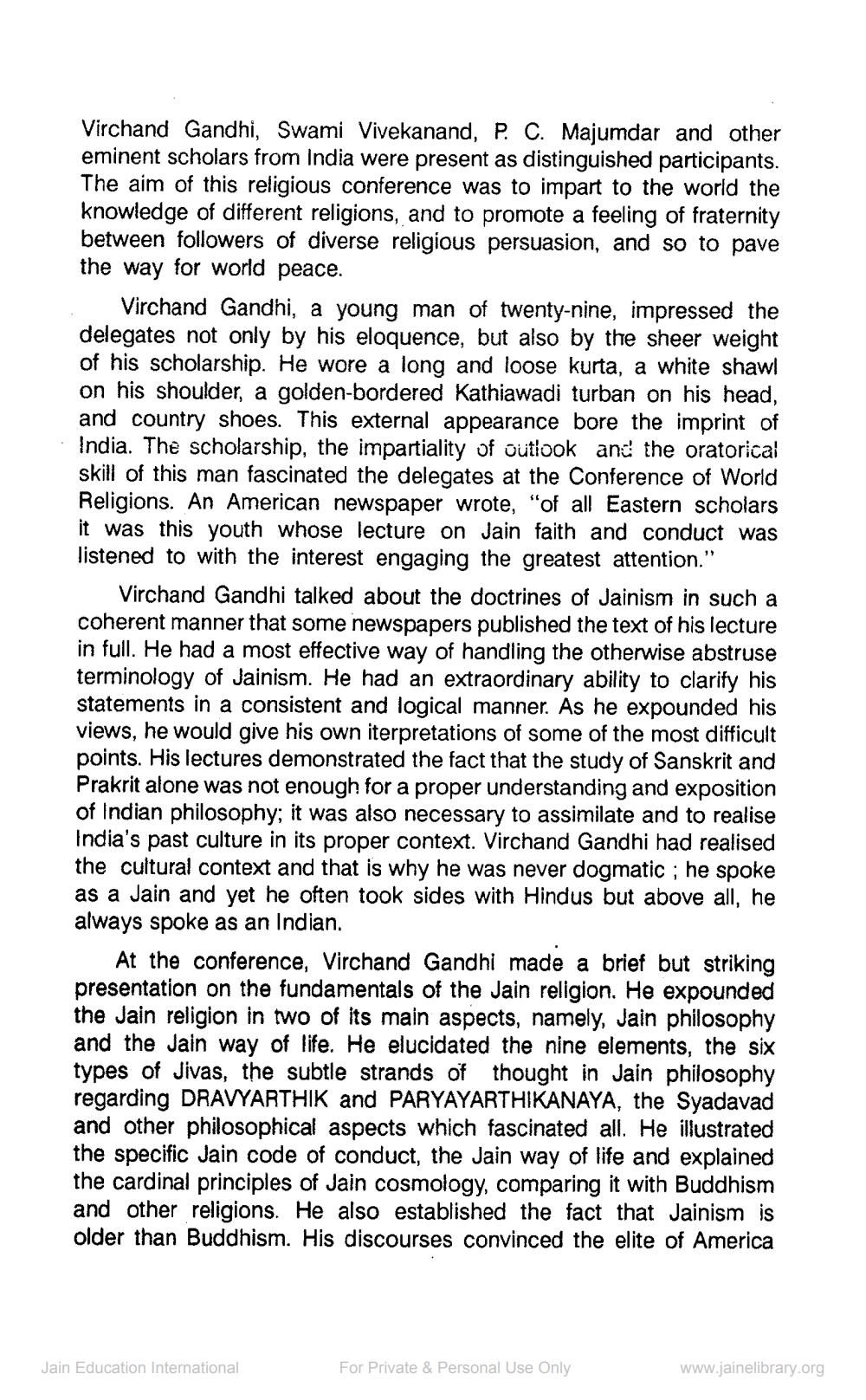________________
Virchand Gandhi, Swami Vivekanand, P. C. Majumdar and other eminent scholars from India were present as distinguished participants. The aim of this religious conference was to impart to the world the knowledge of different religions, and to promote a feeling of fraternity between followers of diverse religious persuasion, and so to pave the way for world peace.
Virchand Gandhi, a young man of twenty-nine, impressed the delegates not only by his eloquence, but also by the sheer weight of his scholarship. He wore a long and loose kurta, a white shawl on his shoulder, a golden-bordered Kathiawadi turban on his head, and country shoes. This external appearance bore the imprint of India. The scholarship, the impartiality of Outlook and the oratorical skill of this man fascinated the delegates at the Conference of World Religions. An American newspaper wrote, "of all Eastern scholars it was this youth whose lecture on Jain faith and conduct was listened to with the interest engaging the greatest attention."
Virchand Gandhi talked about the doctrines of Jainism in such a coherent manner that some newspapers published the text of his lecture in full. He had a most effective way of handling the otherwise abstruse terminology of Jainism. He had an extraordinary ability to clarify his statements in a consistent and logical manner. As he expounded his views, he would give his own iterpretations of some of the most difficult points. His lectures demonstrated the fact that the study of Sanskrit and Prakrit alone was not enough for a proper understanding and exposition of Indian philosophy; it was also necessary to assimilate and to realise India's past culture in its proper context. Virchand Gandhi had realised the cultural context and that is why he was never dogmatic ; he spoke as a Jain and yet he often took sides with Hindus but above all, he always spoke as an Indian.
At the conference, Virchand Gandhi made a brief but striking presentation on the fundamentals of the Jain religion. He expounded the Jain religion in two of its main aspects, namely, Jain philosophy and the Jain way of life. He elucidated the nine elements, the six types of Jivas, the subtle strands of thought in Jain philosophy regarding DRAVYARTHIK and PARYAYARTHIKANAYA, the Syadavad and other philosophical aspects which fascinated all. He illustrated the specific Jain code of conduct, the Jain way of life and explained the cardinal principles of Jain cosmology, comparing it with Buddhism and other religions. He also established the fact that Jainism is older than Buddhism. His discourses convinced the elite of America
Jain Education International
For Private & Personal Use Only
www.jainelibrary.org




